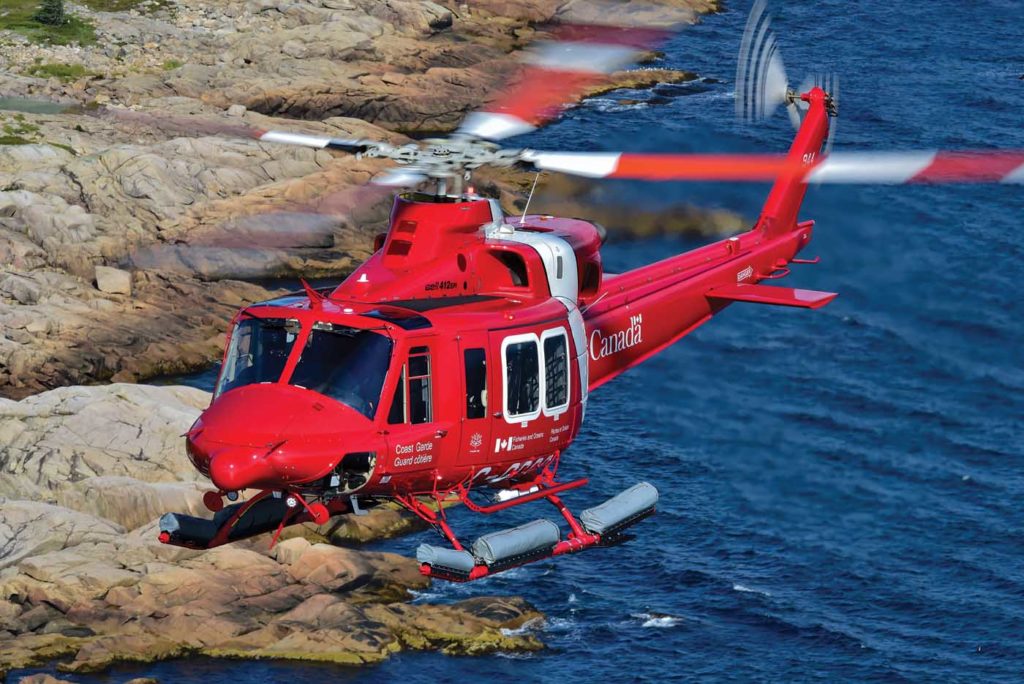Estimated reading time 6 minutes, 9 seconds.
As the Royal Canadian Air Force (RCAF) gears up for the late 2019 arrival of the first of 16 new Airbus CC-295 fixed-wing search and rescue (FWSAR) aircraft, a Senate committee said the government should consider the deployment of even more search and rescue (SAR) aircraft.

“This would be a multi-year, mega-government dollar capital procurement project,” the Standing Senate Committee on Fisheries and Oceans acknowledged in an exhaustive new report, When Every Minute Counts: Maritime Search and Rescue. “Repositioning current aeronautical SAR assets is not feasible . . . at this time because the fleet is fully utilized.”
The November 2018 report is based on more than two years of study and hearings, which wrapped up in October. While most witnesses were heard in Ottawa — including senior RCAF, Canadian Coast Guard (CCG) and Transport Canada officials, as well as representatives of several industries — the committee also travelled to bases across the country as well as visiting officials and SAR facilities in England, Ireland, Norway and Denmark.
RCAF fixed- and rotary-wing assets are a key element in covering nearly 18 million square kilometres of land and sea. In 2017, the Joint Rescue Coordination Centres in Victoria, Trenton and Halifax responded to 10,003 SAR calls, 62 per cent of them maritime.
The committee predicts that the number of calls in the Arctic will increase as global warming results in a longer ice-free navigation period. Accordingly, the report recommends that the CCG establish additional primary search and rescue stations in the Canadian Arctic, where no SAR aircraft are currently based.
It also calls on the Department of National Defence (DND) to authorize a pilot project which would see private civilian helicopters provide coverage in the North as well as in Newfoundland and Labrador, where the committee says “a disproportionately high number” of SAR incidents occur.
In addition to the possible privatization of some missions (CHC Helicopter and Cougar Helicopters Inc. appeared before the committee), the committee also said the CCG should be an independent agency. “The Canadian Coast Guard . . . is hampered by its position within Fisheries and Oceans Canada, which leaves it at the mercy of the department for funding and prevents it from receiving long-term sustainable capital funding.”

SAR reaction times were also an issue for the committee. It was told that the CCG’s official time is 30 minutes from when a helicopter or ship is tasked until it departs, but that it usually takes less than 15 minutes in the case of a surface vessel, because they are probably on the water already.
In comparison, the RCAF has a reaction time of 30 minutes during a typical eight-hour working day five days a week, and two hours at all other times. “Like the CCG vessels, the Canadian Armed Forces (CAF) crews are often airborne sooner than the targeted reaction time, around 20 minutes during working hours and one hour outside of working hours,” the committee notes.
“However, there was considerable discussion regarding what witnesses called the CAF’s ‘two-tier reaction time.’ It was stressed that the two-hour reaction time guaranteed outside of working hours had . . . resulted in missions becoming recovery-oriented instead of rescue-oriented. In their view, the CAF should have a reaction time of 30 minutes, 24/7/365, like the CCG.”
DND witnesses told the committee the concern had been addressed “to the extent possible” and it was the responsibility of SAR commanders in the three regions to align the 30-minute reaction time to coincide with the observed periods of greatest maritime SAR activity. “Overall, the committee was told that shifting the regular weekly schedules without increasing the total number of hours worked has improved readiness.”
It also was told it was impossible for the RCAF to maintain 30-minute readiness at all times because “pilots and SAR aircrew members have a limit on how long they can engage in flying operations.” Sustaining a 30-minute target would require crews to remain poised on flight lines. “The two-hour reaction time allows the pilots and aircrews to be ‘fresh’ and able to deliver a SAR response for up to 14, 16, 18 hours, which allows them to then go longer, further distances. Moreover, the increased level of readiness would require more aircraft, add more maintenance and necessitate infrastructure upgrades.”
The committee says that despite improvements, Canada’s SAR reaction time is “not at par” with other countries.
“Aeronautical SAR assets operated in the United Kingdom, Ireland, and Denmark respond within 15 minutes during the day and between 30 and 45 minutes at night.”
The committee says that given current shortfalls in the RCAF’s pilot, flight engineer and SAR Technician cadres, it isn’t possible to impose similar reaction times on RCAF crews. But it says it hopes the RCAF will reconsider its reaction time targets once personnel shortages are addressed.









“The committee says that despite improvements, Canada’s SAR reaction time is “not at par” with other countries. Aeronautical SAR assets operated in the United Kingdom, Ireland, and Denmark respond within 15 minutes during the day and between 30 and 45 minutes at night.”
Hmm… wonder why that could be?
Canada: 9,984,671 km^2
UK: 248,532 km^2
Ireland: 84,421 km^2
Denmark: 43,094 km^2